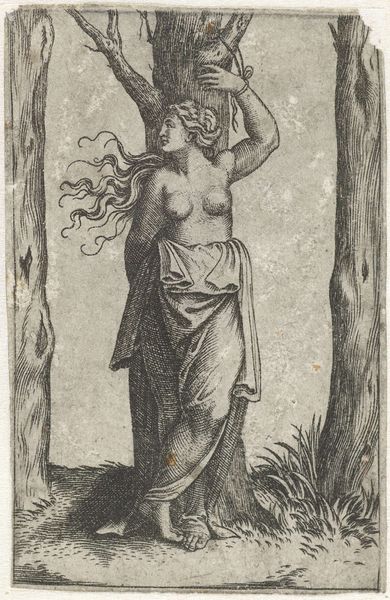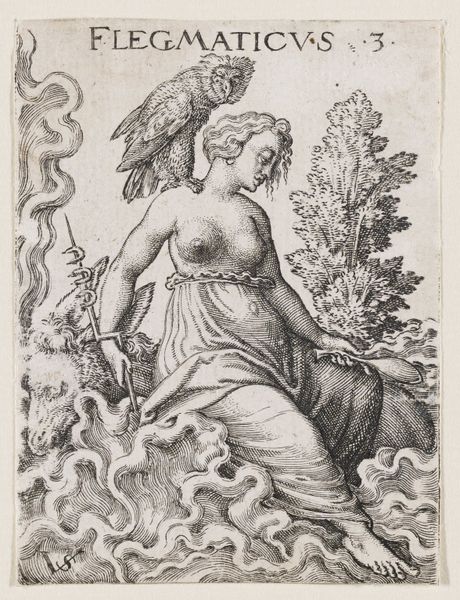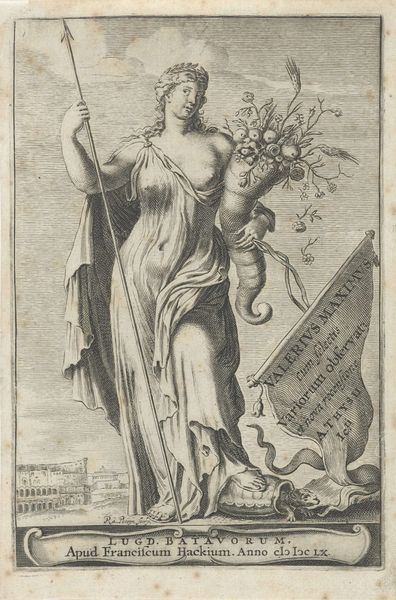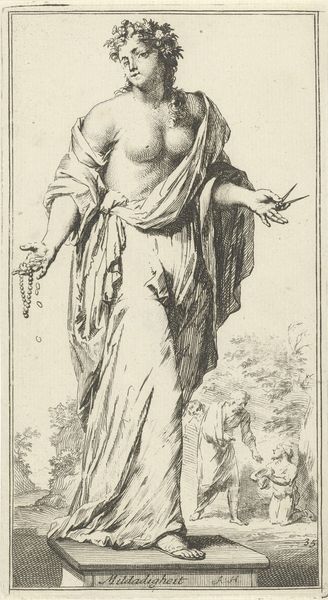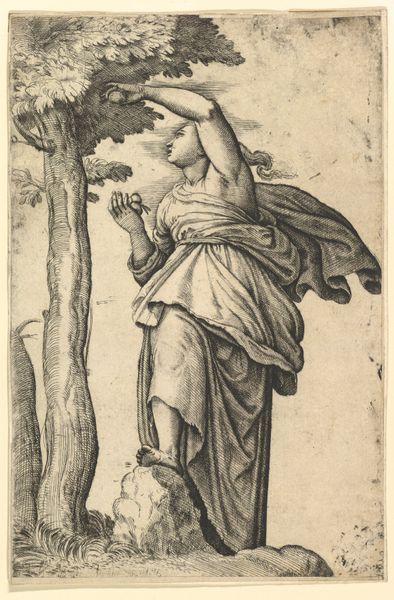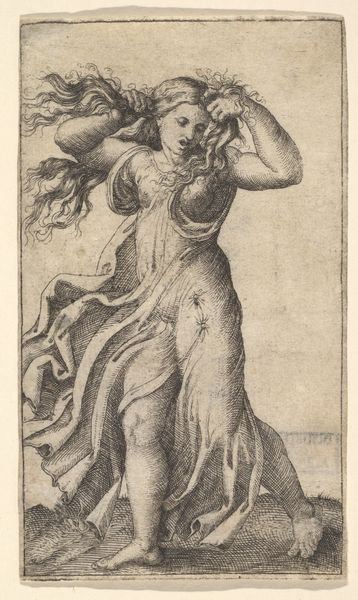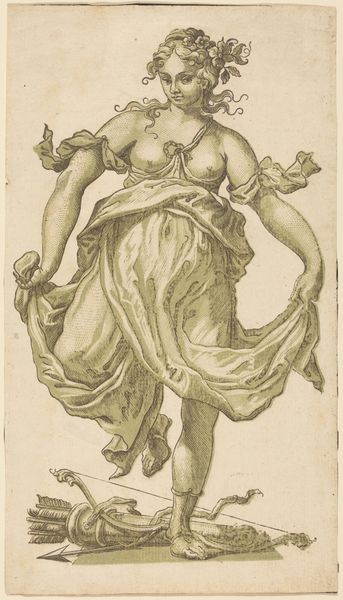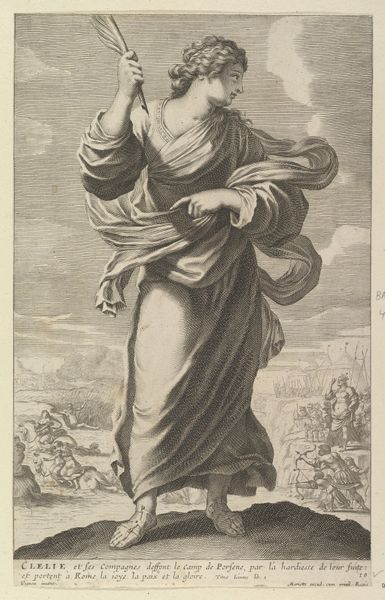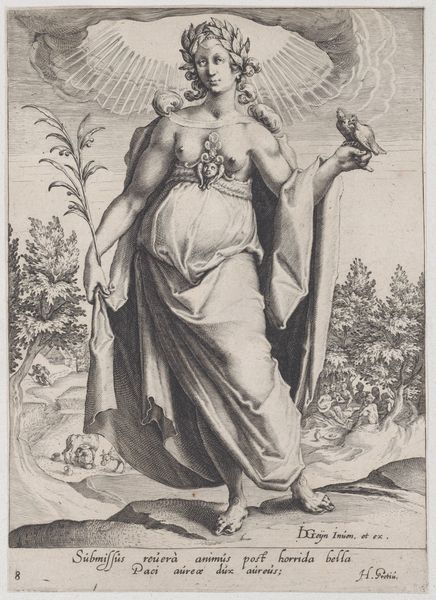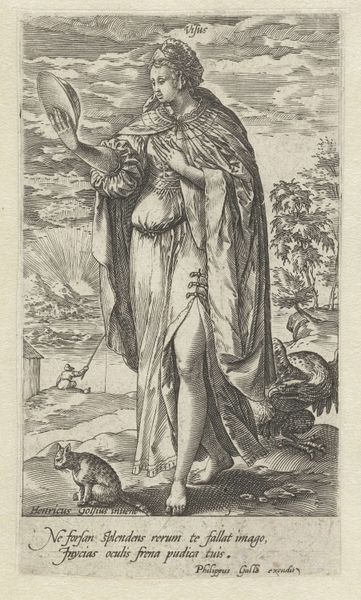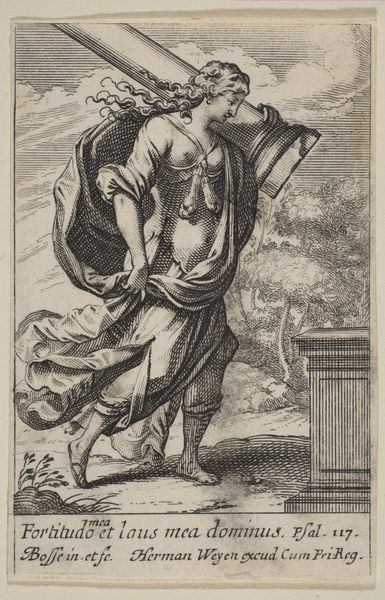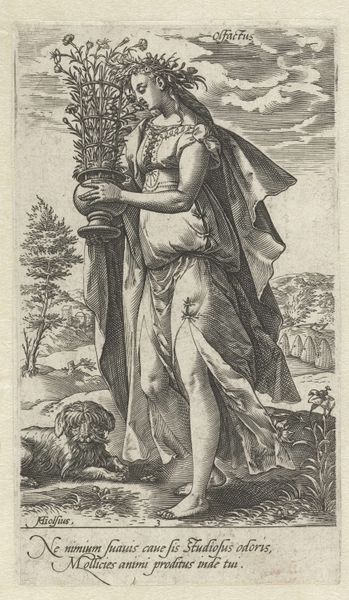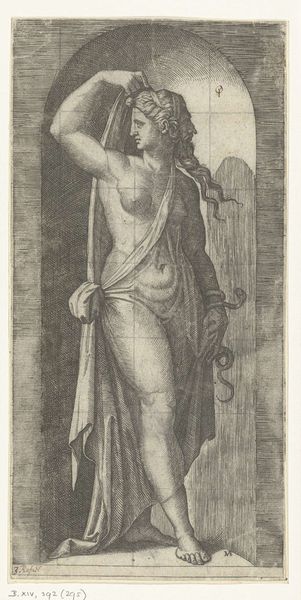
drawing, print, etching
#
portrait
#
drawing
#
allegory
# print
#
etching
#
landscape
#
flower
#
mannerism
#
11_renaissance
#
female-nude
#
italian-renaissance
Dimensions: sheet: 16 1/4 x 11 5/16 in. (41.2 x 28.7 cm) trimmed to platemark
Copyright: Public Domain
Editor: This is "Flora," a Renaissance print made between 1555 and 1575 by an anonymous artist, using etching as its medium. I'm immediately struck by the detailed line work and the somewhat idealized, yet weighty figure. What do you see in this piece, especially from a material perspective? Curator: I'm drawn to how the artist used the etching process to create this effect. Consider the labour involved in the reproductive process, transforming visual ideas into mass produced material goods, allowing wider access for viewing, owning and copying by artisans and connoisseurs. What socioeconomic factors made prints like these a popular method for spreading images? Editor: That’s fascinating. So, you're saying the *making* of the print is just as important as the image itself? It's about democratizing art, by turning it into a consumer product, and empowering an entire population of artisans. Curator: Exactly! Consider the availability of paper, inks, the very tools needed for etching, as vital considerations and social realities when studying artworks like this one. The quality of these materials also had significant effect on distribution and cost to the consumer. Where do you think the materials came from for creating these works, and who had access to these objects? Editor: Wow, that makes me think differently about this "Flora." I was so focused on her idealized form, but now I see it’s about the larger economic and social machine making her image accessible to the masses, by using readily available paper, affordable inks and skilled but under recognized laborers. Thank you. Curator: Indeed, by interrogating art production, reproduction and circulation as processes, we challenge traditional understandings and class structures inherent in art history. Considering materiality changes how we understand the artistic process, wouldn’t you agree?
Comments
No comments
Be the first to comment and join the conversation on the ultimate creative platform.
